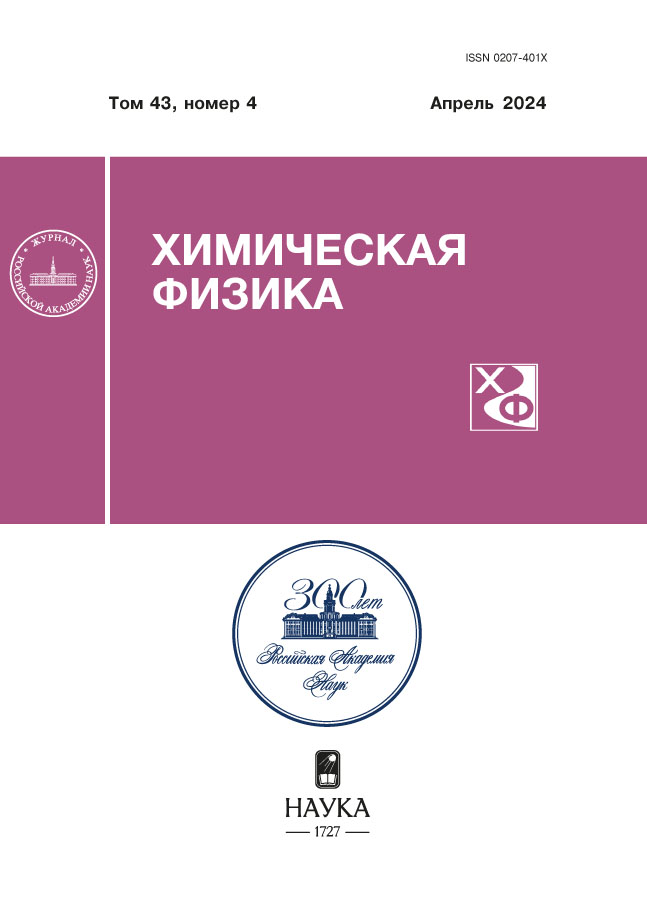Improvement of morphophysiological parameters of pepper after the seed pre-sowing treatment with zinc nanoparticles
- 作者: Olkhovskaya I.P.1, Krokhmal I.I.1,2, Glushchenko N.N.1
-
隶属关系:
- Semenov Federal Research Center for Chemical Physics of the Russian Academy of Sciences
- State Autonomous Cultural Institution of the City of Moscow “Zaryadye Park”
- 期: 卷 43, 编号 4 (2024)
- 页面: 88-96
- 栏目: Chemical physics of biological processes
- URL: https://medjrf.com/0207-401X/article/view/674965
- DOI: https://doi.org/10.31857/S0207401X24040115
- EDN: https://elibrary.ru/VDYWRO
- ID: 674965
如何引用文章
详细
Advanced nanotechnologies allow synthesizing nanoparticles (NPs) with given physical and chemical properties providing an opportunity to study the effects and mechanisms of NPs influence on plants in order to improve their productivity. In this study, Zn NPs introduced in the polymer coating were used as a preparation for pepper seeds pre-sowing treatment. It was found that Zn NPs in concentrations of 10–5% and 10–6% in polymers accelerated plant growth and led to a significant increase in the number of leaves and buds, root mass volume being increased by an average of 10–30% compared to the control. After seed treatment with 10–6% Zn NPs the increase of proline content in plant leaves grew by 58% (p ≤ 0.05), protein content by 20% (p ≤ 0.05); treatment of seeds with Zn HPs at 10–5% concentration led to sugar content enlargement by 36% (p ≤ 0.05), chlorophyll by 52% (p ≤ 0.05) as compared with control.
全文:
作者简介
I. Olkhovskaya
Semenov Federal Research Center for Chemical Physics of the Russian Academy of Sciences
Email: nnglu@mail.ru
俄罗斯联邦, Moscow
I. Krokhmal
Semenov Federal Research Center for Chemical Physics of the Russian Academy of Sciences; State Autonomous Cultural Institution of the City of Moscow “Zaryadye Park”
Email: nnglu@mail.ru
俄罗斯联邦, Moscow; Moscow
N. Glushchenko
Semenov Federal Research Center for Chemical Physics of the Russian Academy of Sciences
编辑信件的主要联系方式.
Email: nnglu@mail.ru
俄罗斯联邦, Moscow
参考
- K.S. Siddiqi, A. Husen, Crit. Rev. Biotechnol. 42 (7), 973 (2022). https://doi.org/10.1080/07388551.2021.1975091
- U. Aqeel, T. Aftab, M.M.A. Khan, et al., Chemosphere 291 (2022). https://doi.org/10.1016/j.chemosphere.2021.132672
- I. G. Kalinina, V. B. Ivanov, S. A. Semenov, Russ. J. Phys. Chem. B 15 (3), 506 (2021).
- G. De la Rosa, M. L. Lopez-Moreno de Haro, et al., Pure Appl. Chem. 85, 2161 (2013). https://doi.org/10.1351/pac-con-12-09-05
- D. S. Meena, H. M. Jayadeva, C. Gautam, et al., Int. J. Plant Soil Sci. 16, ١ (2017). https://doi.org/10.9734/ijpss/2017/33687
- M. Taheri, H. A. Qarache, A. A Qarache, et al., STEM Fellowship J. 1, 17 (2016). https://doi.org/10.17975/sfj-2015-011
- A. R. Sofy, M. R. Sofy, A. A. Hmed, et al., Molecules 26 (5), 1337 (2021). https://doi.org/10.3390/molecules26051337
- H. Yasmin, J. Mazher, A. Azmat, et al., Ecotoxicol. Environ. Saf. 218, 112 (2021). https://doi.org/10.1016/j.ecoenv.2021.112262
- M. Faizan, J.A. Bhat, C. Chen, et al., Plant Physiol. Biochem. 161, 122 (2021). https://doi.org/10.1016/j.plaphy.2021.02.002
- M. V. Bazunova, R. A. Mustakimov, E. I. Kulish, Russ. J. Phys. Chem. B 15 (5), 888 (2021).
- M. S. Sheteiwy, H. Shaghaleh, Y. A. Hamoud, et al., Environ. Sci. Pollut. Res. Int. 28 (28), 36942 (2021). https://doi.org/10.1007/s11356-021-14542-w
- Sohail, L. Sawati, Ferrari E., et al., Front. Plant Sci. 25 (13), 798751 (2022). https://doi.org/10.3389/fpls.2022.798751
- Chen Yu, Lu Jinying, Liu Min, et al., IET Nanobiotechn. 14 (5), 382 (2020). https://doi.org/10.1049/iet-nbt.2019.01832
- T. A. Yurina, G. V. Drobin, O. A. Bogoslovskaya, et al., Sel’skokhozyaistvennaya Biologiya. 56 (1), 135 (2021). https://doi.org/10.15389/agrobiology.2021.1.135eng
- I. O. Leipunsky, A. N. Zhigach, M. L. Kuskov, et al., J. Alloys Compd. 778, 271 (2018). https://doi.org/10.1016/ j. jallcom. 2018.11.088
- O. H. Lowery, N. J. Rosenbrough, A. L. Farr, et al., J. Biol. Chem. 27, 265 (1951).
- D. Arnon, J. Plant. Physiol. 24, 1 (1949).
- J. T. O. Kirch, Planta 78, 200 (1968).
- S. M. Dubo, K. A. Giles, J. K. Hmilton, et al., Anal. Chem. 28, 350 (1956).
- R. P. Johnson, T. L. Balwani, L. J. Johnson, et al., Anim. Sci. 25, 617 (1966).
- L. S. Bates, Plant. Soil. 39, 205 (1973).
- S. Afzal, N. K. Singh, Environ. Pollut. 314, 120224 (2022). https://doi.org/10.1016/j.envpol.2022.120224
- J.C. Tarafdar, R. Raliya, H. Mahawar et al. Agric. Res. 3, 257 (2014). https://doi.org/10.1007/s40003-014-0113
- S. K. Dhoke, P. Mahajan, R. Kamble, et al., Nanotechnol. Dev. 3, 111 (2013).
- S. Torabian, M. Zahedi, A.H. Khoshgoftar, J. Plant Nutr. 39, 172 (2016). https://doi.org/10.1080/01904167.2015.1009107
- S. L. Laware, S. Raskar, Int. J. Curr. Microbiol. Sci. 3, 874 (2014).
- А. M. Zhukov, V. I. Solodilov, I. V. Tretyakov, Russ. J. Phys. Chem. B 16, (5) 926 (2022).
- R. Prasad, V. Kumar, K. S. Prasad, Afr. J. Biotechnol. 13, 705 (2014). https://doi.org/10.5897/ajbx2013.13554
- F. Pinto, M. Celesti, K. Acebron, Plant Cell Environ. 43, 1637 (2020). doi: 10.1111/pce.13754.
- R. Raliya, J. C. Tarafdar, Agric. Res. 2, 48 (2013).
- V. L. Reddy Pullagurala, I. O. Adisa, S. Rawat. Plant Physiol. Biochem. 132, 120 (2018). https://doi.org/10.1016/j.plaphy.2018.08.037
- X. Wang, X. Yang, S. Chen, et al. Front Plant Sci. 6, 1243 (2016). https://doi.org/10.3389/fpls.2015.01243
补充文件














